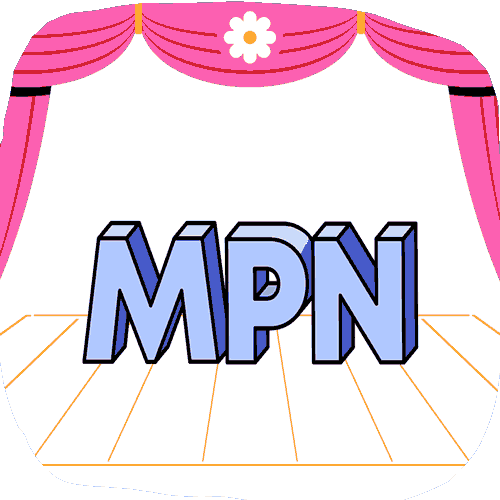How to Apply HCPCS G2212 in CA Workers' Comp

Important Update: The DWC adopted an MUE limiting the number of units of G2212 providers may bill. Details below!
This year, California’s Division of Workers’ Compensation (DWC) debuted a new code for billing extended Evaluation and Management (E/M) time: Healthcare Common Procedure Coding System (HCPCS) G2212. Correctly applying G2212, and navigating new rules for E/M billing generally, has been a challenge for many provider offices.
DaisyBill is here to help! Below is a breakdown of exactly how to use G2212 correctly to ensure your office receives prompt, accurate reimbursement.
Primer: New Workers’ Comp E/M Billing Rules
The DWC made a major change to E/M billing effective March 1, 2021. Previously, providers determined the E/M service level using a complex system of E/M service components. This year, the DWC scrapped that system in favor of a more streamlined, two-pronged approach. For all dates of service on or after March 1, providers determine the E/M service level via:
-
The complexity of Medical Decision Making (MDM)
OR - The time spent providing E/M services
For a thorough explanation of this change (and details regarding MDM), see our recent detailed post on the subject. This post will focus on time-based billing only. For dates of service on or after March 1, providers simply choose the Current Procedural Terminology (CPT) code that corresponds to the time spent on E/M services.
E/M services include:
- Preparing to see the patient (e.g., review of tests)
- Obtaining and/or reviewing separately obtained history
- Performing a medically appropriate examination and/or evaluation
- Counseling and educating the patient/family/caregiver
- Ordering medications, tests, or procedures
- Referring and communicating with other health care professionals (when not separately reported)
- Documenting clinical information in the electronic or other health record
- Independently interpreting results (not separately reported) and communicating results to the
- Patient/family/caregiver care coordination not separately reported
The table below displays the appropriate codes by time, for new and established patients, when NO extended E/M service time is applicable.
Time - E/M Billing (Without Extended Time)
The table below demonstrates that the E/M CPT codes can only accommodate a maximum of 74 minutes (for new patients) and 54 minutes (for established patients). When E/M services exceed either of those limits, and the provider chooses to bill by time, the provider must use G2212.
Patient Type |
Time Spent (in minutes) |
E/M Code |
New |
15-29 |
CPT 99202 |
New |
30-44 |
CPT 99203 |
New |
45-59 |
CPT 99204 |
New |
60-74 |
CPT 99205 |
Established |
<10 |
CPT 99211 |
Established |
10-19 |
CPT 99212 |
Established |
20-29 |
CPT 99213 |
Established |
30-39 |
CPT 99214 |
Established |
40-54 |
CPT 99215 |
For a handy guide to applying G2212, continue reading.
How to Apply HCPCS G2212
To correctly apply G2212, for every 15 minutes of E/M services time beyond the maximum allotted by CPT 99205 (74 minutes) or CPT 99215 (54 minutes), a provider must report one (1) unit of G2212.
When applying G2212, providers must adhere to the following rules:
- Providers may bill G2212 only when choosing the level of E/M services based on time, not MDM.
- Providers must spend an entire 15 minutes providing E/M services for each unit of G2212 billed. In other words, 1-14 additional minutes of E/M service does not warrant a unit of G2212.
- The 15 minutes may reflect face-to-face or non-face-to-face services related to the E/M.
- Providers may only bill G2212 in addition to CPT codes 99205 or 99215, depending on whether the patient is new or established.
- Update as of 4/23/21: previously, there was no limit to the number of G2212 units providers could apply. However, the DWC has adopted a Medically Unlikely Edit (MUE) limiting providers to 4 units of G2212 for dates of service on or after April 1, 2021.
There is no limit to the number of billable G2212 units for dates of service from March 1 to March 31, 2021.
In practice, billing G2212 works as shown in the table below, per the CMS Manual System. For example, 89 to 103 minutes of total E/M services in a single encounter for a new patient qualifies for one unit of 99205, plus one unit of G2212:
When to Bill HCPCS G2212
Patient Type |
Total E/M Services Time* |
CPT Code |
G2212 Units |
New |
60-74 minutes |
99205 |
0 |
New |
75-88 minutes |
99205 |
0 |
New |
89-103 minutes |
99205 |
1 |
New |
104-118 minutes |
99205 |
2 |
New |
119 - 133 minutes |
99205 |
3 |
New |
134 - 149 minutes |
99205 |
4 |
Established |
40-54 minutes |
99215 |
0 |
Established |
55-68 minutes |
99215 |
0 |
Established |
69-83 minutes |
99215 |
1 |
Established |
84-98 minutes |
99215 |
2 |
Established |
99-113 minutes |
99215 |
3 |
Established |
134 - 149 minutes |
99215 |
4 |
*Total E/M Services Time is the sum of all time, including prolonged/extended time, spent by the reporting practitioner on the date of service of the visit.
G2212? Why Can’t We Just Use CPT 99417?
California workers’ comp providers must use HCPCS G2212 to bill for extended E/M services time. This requirement stems from a disagreement between the American Medical Association (AMA) and the Centers for Medicare and Medicaid Services (CMS).
The AMA developed CPT 99417 for billing extended E/M service time. However, the California DWC did not adopt CPT 99417. Instead, the DWC followed the lead of the CMS, which objected to CPT 99417 as written. According to the CMS:
“While we prefer to align with CPT coding to reduce potential confusion to practitioners, we continue to believe that CPT code 99417 as written is unclear and that allowing reporting of CPT code 99417...would result in double counting time.
...to resolve the potential inconsistency of our policy with CPT code 99417, we are creating a new HCPCS code G2212 to be used when billing Medicare for this service instead of CPT code 99417, starting in 2021.”
The California DWC concurred, and adopted HCPCS G2212 for workers’ comp in lieu of CPT 99417. But in their attempt to avoid “potential inconsistency,” the CMS created exactly the kind of “potential confusion” currently furrowing the brows of California providers.
For further study, feel free to watch the replay of our recent live webinar on 2021 Physician Fee Schedule Changes, which includes a breakdown of the new billing rules for E/M services.
Make workers’ comp easier! DaisyBill takes the hassle out of authorization, billing, and appeals with user-friendly technology. Workers get treatment. You get paid. Everyone wins! Schedule a free demo today.
REQUEST DEMO
DaisyBill provides content as an insightful service to its readers and clients. It does not offer legal advice and cannot guarantee the accuracy or suitability of its content for a particular purpose.


